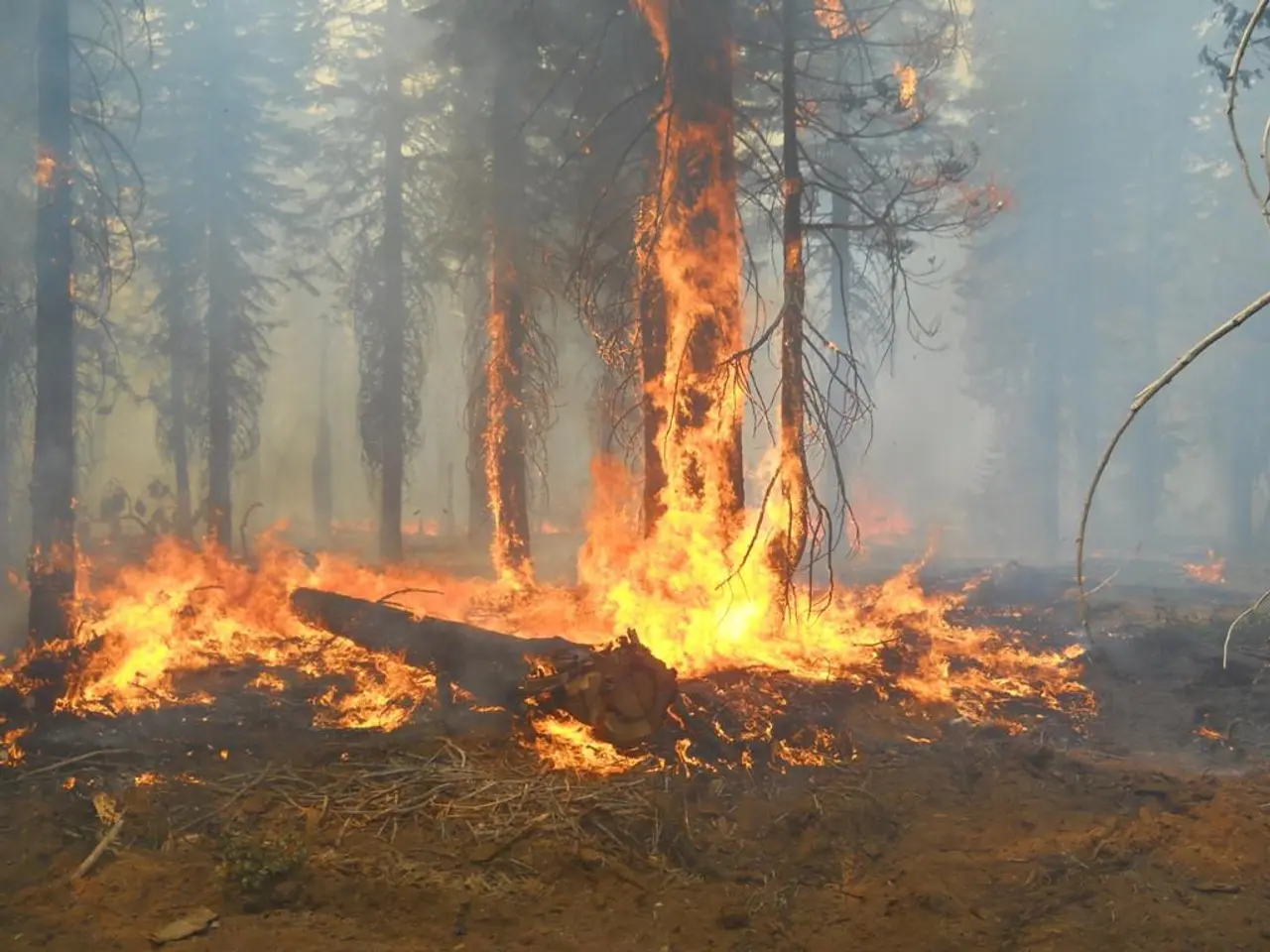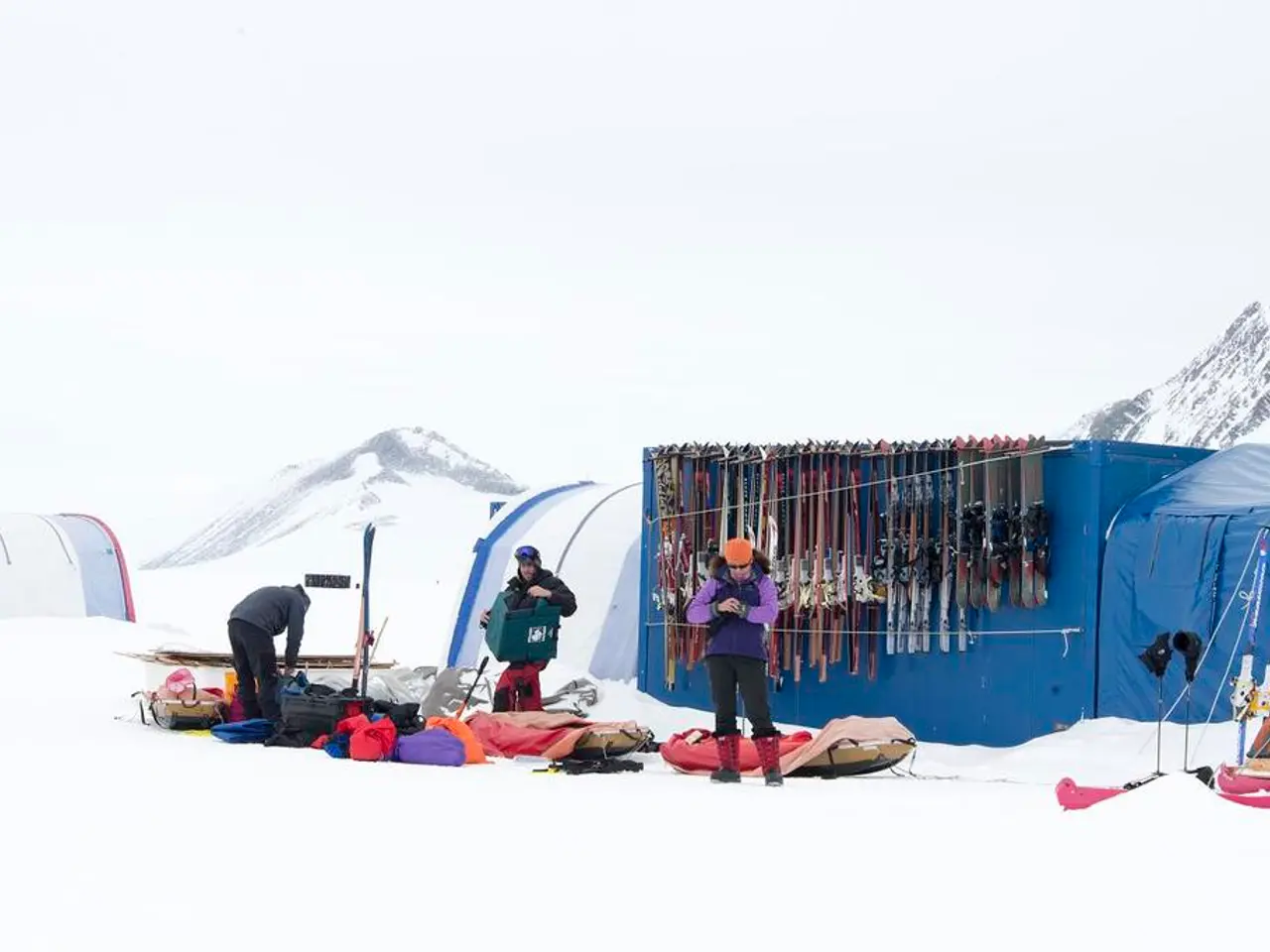Commission Aysen Nikolayev convened the Committee for the Prevention and Eradication of Emergency Scenarios and Fire Hazards
In Yakutia (Sakha Republic), the 2025 fire season has seen a significant increase in forest fires, with 169 fires recorded between May and September. This is a concerning development, especially since the overall figures in Russia are reportedly lower than last year's and the five-year average.
The swampy, forested region of Yakutia is particularly vulnerable to these fires, which result in significant environmental impact, including carbon loss from burned forest plots. Climate change is a major driver of this increase, with Russia warming 2.5 times faster than the global average. This contributes to prolonged heat waves, dry spells, and extreme weather variability that heighten fire risk.
Weather patterns such as heat, thunderstorms, and absence of precipitation elevate fire danger not only in Yakutia but across many regions of Russia. The prevalence of conifer forests also increases natural fire susceptibility due to their vegetation characteristics. Human factors, such as adherence to safety rules in forests, influence fire occurrence and spread, although specific local human-caused ignition data is not detailed in the available reports.
Current response efforts are active and include federal force deployments, aerial firefighting, and emergency response teams rescuing residents and animals from affected areas. Regional emergency regimes are enacted in high-risk areas to mobilise resources rapidly. Fire danger indexes and meteorological monitoring guide prevention and response strategies, emphasising the dependence of fire development on both weather conditions and compliance with forest safety regulations.
However, specific long-term preventive strategies, such as forest management practices or community education campaigns in Yakutia, are not detailed in the current data.
As of the second half of the day, there are 58 forest fires in Yakutia, covering over 61,000 hectares. The Verkhoyansky District has the most fires in Yakutia, with 16 fires covering approximately 15,000 hectares. More than 250 firefighters are battling the fires in the Verkhoyansky District, with 2 Mi-8 helicopters involved. Firefighters have managed to stop the spread of the fire in the Verkhoyansky District, and backfiring operations continue.
In the Tomponsky District, there are also 16 fires, located in hard-to-reach mountainous areas. The forest fires are predominantly in mountainous areas where machinery cannot reach.
To strengthen aerial and ground monitoring for forest fire units, Aisen Nikolaev, the Head of the Main Directorate of the EMERCOM of Russia in Yakutia, has recommended that the Main Directorate put its air-mobile groups on standby. He has also urged municipal patrol-maneuver groups to be ready for swift deployment and reinforcement on active fires.
A fire spotter aircraft will be deployed next week to boost rainfall in the eastern part of the republic and the Kolymo-Indigirka region. On August 1, a meeting was held by Aisen Nikolaev regarding the Commission on Prevention and Elimination of Emergency Situations and Ensuring Fire Safety.
From July 19 to 25, 50 new forest fires occurred, and from July 26 to August 1, there were 71 new forest fires. Despite this, the overall statistics of forest fires compared to last year are significantly better. Last year at this time, there were 897 fires covering over 3.4 million hectares. The efficiency of firefighting has increased by more than 60% compared to previous years.
In conclusion, while response efforts are active in Yakutia, mitigation and prevention require ongoing attention given the increasing frequency of fires and associated environmental and social impacts.
- The swampy, forested environment of Yakutia, being a crucial component of the broader environmental-science domain, has experienced an alarming surge in forest fires due to climate-change effects, which contribute to prolonged heatwaves, dry spells, and extreme weather variability that heighten fire risk.
- Despite the currently active response efforts that involve federal forces, aerial firefighting, and emergency teams, there is a pressing need for long-term preventive strategies in Yakutia, such as forest management practices or community education campaigns, to combat the growing threat of forest fires exacerbated by climate change.
- To enhance aerial and ground monitoring for forest fire units and prepare for swift deployment in high-risk areas, the Head of the Main Directorate of the EMERCOM of Russia in Yakutia, Aisen Nikolaev, has recommended putting air-mobile groups on standby and urging municipal patrol-maneuver groups to be ready for reinforcement on active fires.








